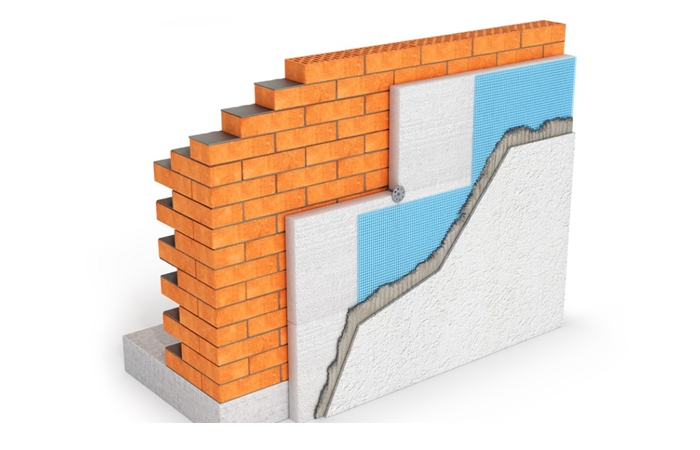
In order To understand the significant savings benefit which is achieved by insulating a building (roof and walls), in houses with thermal insulation and especially in new buildings constructed according to the KENAK specifications, less than 3-5 litres of heating oil per square metre per year is required, while older and uninsulated buildings require 25 litres on average. Some buildings even need 60 litres per square metre per year!
In addition to the suggestions for thermal insulation of the roof, our company also proposes the following system of external masonry insulation, in order to achieve the complete energy, thermal insulation and aesthetic upgrade of your building.
Certified external thermal insulation system (ETICS) VITEXTHERM of VITEX Company for increasing thermal comfort inside the house and the lifetime of the building.
The system is applied with expanded polystyrene thermal insulation boards that offer excellent thermal insulation, excellent breathability and flexibility. The final coating is coloured in various shades (or hues) through VITEX's colourfull colouring system, giving the appearance the vibrancy and aesthetic effect we desire.
The system is accompanied by a full range of products covering all construction specifics and ensuring the excellent technical result of the application.
CONSTRUCTION STAGES:
STAGE 1: SURFACE PREPARATION - SURFACE CONTROL
The surface to be insulated is cleaned so that it is clean, dry, free from loose material, dust, oil residues etc.
The flatness of the construction shall be ensured by the use of a suture. The metal starter guide is initially installed to ensure alignment of the external thermal insulation system and the flatness of the facades is checked. The metal guide is flattened with the substrate using spacers.
The temperatures during application of the system should be between 5 and 30 °C.
STAGE 2: COATING OF HEATING PLATES
The EPS 80 expanded polystyrene thermal insulation boards are glued with the fibre-reinforced cement-based adhesive GNK 10G (indicative consumption 3-5kg/m2). The boards are applied in a row starting from the bottom upwards. Each subsequent row is placed approximately half a slab offset in order to avoid vertical joints and any gaps between the slabs are filled either with pieces of insulation material (for gaps >0.5cm) or polyurethane foam.
STAGE 3: ENGINEERING SUPPORT
After at least one day to ensure sufficient hardness of the bonding material, the thermal insulation plates are anchored with special VITEXTHERM PL/MT/THREAD plugs with a consumption of 4-6 plugs/m2.
STEP 4: ROUGHCASDT LAYERING AND ARMOR INTEGRATION
The inorganic fibre-reinforced reinforcement material GNK 20 W is applied to encapsulate the anti-alkaline mesh. The VITEXTHERM WALL is embedded in the fresh reinforcement layer by overlapping its sheets by 10cm.
At the same time, special pieces such as corner posts, and water stops, expansion joint profiles and reinforcement of corners in openings with pieces of glass mesh are applied where its required.
STAGE 5: CREATION OF FINAL SURFACE (FINAL PLASTER)
After sufficient drying time of the base coat and primer and if the weather conditions are suitable, the final coating can be started.
The coloured embossed primer GRANIKOT PRIMER is applied.
The final stage of the external thermal insulation system is the application of GRANIKOT ACRYLIC 1,00mm coatings in the colour of your choice.